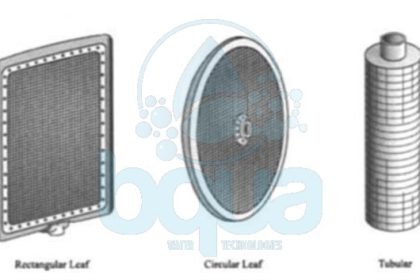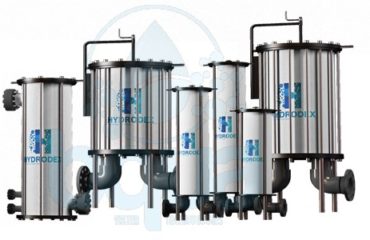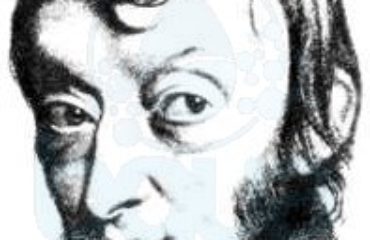
What is Diatomaceous Earth DE Filter Design
Several options are available in designing each of the flat-leaf DE filter elements, as well as in the integrated assembly DE filter design.
diatomaceous earth DE filter design flat leaf element
Types of DE Filter
Two basic groups of DE filter are available. If source water is to be forced through the filter under pressure, the containment vessel must be closed. DE filter operates under a vacuum, on the other hand, may be open vessels. Although there is theoretically no limitation to what pressure may be applied to a pressure-type filter. Practical considerations of pumping costs have limited head loss to a maximum of 35 psi (241 kPa). Most systems used for drinking water filtration are designed for a maximum head loss of 25 psi (172 kPa).
DE Filter Design Construction
Pressure filters are always constructed as cylindrical pressure vessels mounted either vertically or horizontally. Most units fabricated today are made of stainless steel for the shell and most internal parts. The type of stainless steel used depends on the corrosivity of the water being treated. Vacuum filters are built as rectangular tanks. Because of the low differential heads they are subject to, vacuum filter containments and internal parts, except certain structural supports, are most often fabricated of plastics for their chemical resistance and reduced maintenance. For larger units, the containment vessel may be constructed of concrete.
DE Filter Elements
Inlet water flow is introduced to a DE filter through the containment wall, fitted with an internal baffling device to prevent disturbance of the filter cake. Filter cake may be cleaned from the filter by scraping, vibration, hydraulic bumping (surging), or manually hosing down the septa from the top of an open vessel. Many arrangements of filter elements are available, constructed in both a tubular and flat form, with the flat (or “leaf’) design being by far the most common.
DE Filter elements may be mounted either horizontally or vertically, and they may be either fixed in position or able to rotate. Vertical mounting of the leaves is used almost exclusively for water treatment applications. Most pressure and vacuum filters constructed today have fixed leaves mounted by means of spigot-type “push-on” outlets installed in sockets on a manifold and sealed by O rings or flat gaskets. The outlet manifold is usually located below the leaves to provide them with support while allowing gravity to assist in seating the push-on connections.
Variations for both leaf connections and manifold location are selected depending on operating conditions and requirements for inspection and maintenance. Fixed-leaf pressure filters may also be divided into retracting shell and retracting bundle types for internal access. Both options may be used for any size filter, but the retracting bundle type is is generally preferred for larger units. The retracting shell or tank design has the shell mounted on wheels on rails. An electric motor or hydraulic piston opens and closes the unit.
In the retracting bundle design, the shell head is suspended from an overhead monorail. The bundle, attached by the manifold and frame to the head, is retracted by means of the monorail, which is usually motor-driven. Internal rails attached to the shell support the end of the leaf bundles when the shell is opened. Thorough cleaning of the septa at the end of a filter run is important in maintaining peak efficiency. Most units used for water treatment sluice the cake with water sprays, which creates a slurry that can be easily handled and treated and does not require opening the filter vessel.
Fixed-leaf filters are usually cleaned with high-pressure spray jets mounted on oscillating spray heads, with single or multiple jets directed between the filter leaves. Rotating filter leaves usually have a stationary spray header, and coverage is obtained as the leaves rotate past the sprays. Open filters may be cleaned manually using high pressure sprays and may require covers over the units to contain the spray. Additional devices that may assist in the complete removal of the cake slurry from the filter containment include spray jets in the invert of the vessel or an air scour to suspend the material before the vessel is drained.
diatomaceous earth DE filter design rectangular circular tubular element
Leaf DE Filter Design
The flat DE filter leaf with a broad surface and limited thickness should be designed with the following goals:
• Leaf and outer frame must be stiff enough to resist warping under the force exerted at maximum differential pressure.
• The unit must have a backing screen to prevent the cloth septum from flexing under gradually increasing pressure.
• The path provided for filtrate flow must not restrict flow and must create minimal head loss through the leaf. It is essential that the filter cake remain undisturbed.
An adequate filter leaf design prevents the possibility of cake movement due to warping of the frame or flexing of the septum.
Central Drainage Chamber
There are three basic types of filter leaf drainage chambers. Heavy wire mesh with wire spacing up to 1 in. (2.5 cm); expanded metal sheets that provide a deeper chamber with increased rigidity. And the Trislot, a proprietary design having thin metal bars with welded transverse round or wedge-shaped wires.
DE Filter Backing Screen
The backing screen is an intermediate screen used when the irregular surface of the central drainage chamber may permit flexing of the cloth septa under conditions of varying pressure.
DE Filter Septum
Filter septum materials are cloth weaves made with either stainless steel wires or plastic monofilaments. The principal purpose of the septum is to retain the pre-coat, which must bridge the openings in the weave. Because openings in the weave are larger than the major portion of particulates in pre-coat material, the pre-coat is retained by bridging. The cloth septum must be uniformly woven to produce an even pre-coat that reduces the extent of the recirculation required to deposit the material. The weave must also be designed so that it sluices cleanly, drops the cake freely, and resists plugging and damage. One of the more common wire cloths for water filtration is a standard 24 × 110 Dutch weave. Another type of weave is the multibraid, composed of bundles of wire in both directions. This weave is less vulnerable to the entrapment of particles and blinding than the standard weave. Woven wire cloth may also be “calendered,” which involves passing the cloth through compression rollers to flatten the rounded wire at the surface of the weave. Calendering improves pre-coat retention characteristics and generally strengthens the cloth against rough treatment. Plastic cloth is used predominantly for vacuum-type DE filters and is available in a variety of weaves using either polyester or polypropylene monofilament. Plastic cloth may be supplied as a bag to envelop a filter leaf or as a cloth caulked into a leaf frame.
Binding Frame Closures
The binding frame surrounds the filter leaf to prevent leakage around the septum. The outside frame is also the principal structural element to provide rigidity and prevent warping. Depending on the shape, the outside binder may also collect flow from the central chamber and supplement flow routing to the outlet nozzle.
Vacuum Filter Leaves
Vacuum filter leaves used for drinking water treatment are often made of plastic. The central drainage chamber and outlet spigot are molded in a single piece, usually of high-impact styrene. Ridges or other raised patterns provide the required flow path. The raised pattern is spaced so that intermediate screens are not required. The septum, in the form of an envelope with zipperlike closures, is sealed at the bottom outlet by a gasket that also provides tight closure for the manifold connection.
Outlet Connections
Fixed-leaf filter leaves usually have spigot-type outlet connections made of castings machined to fit into the sockets of the outlet manifold. The central drain hub is used for rotating leaves and is of two-piece construction, clamped to the center of the circular leaf by bolts. The leaf outlet connection must be of sufficient size to allow full flow of the filtrate collected by the leaf at a minimum head loss. As leaf size and loading increase, the distribution of flow within the leaf and the transition to the outlet connection increase in importance.
Reference: Water Treatment Plant Design



